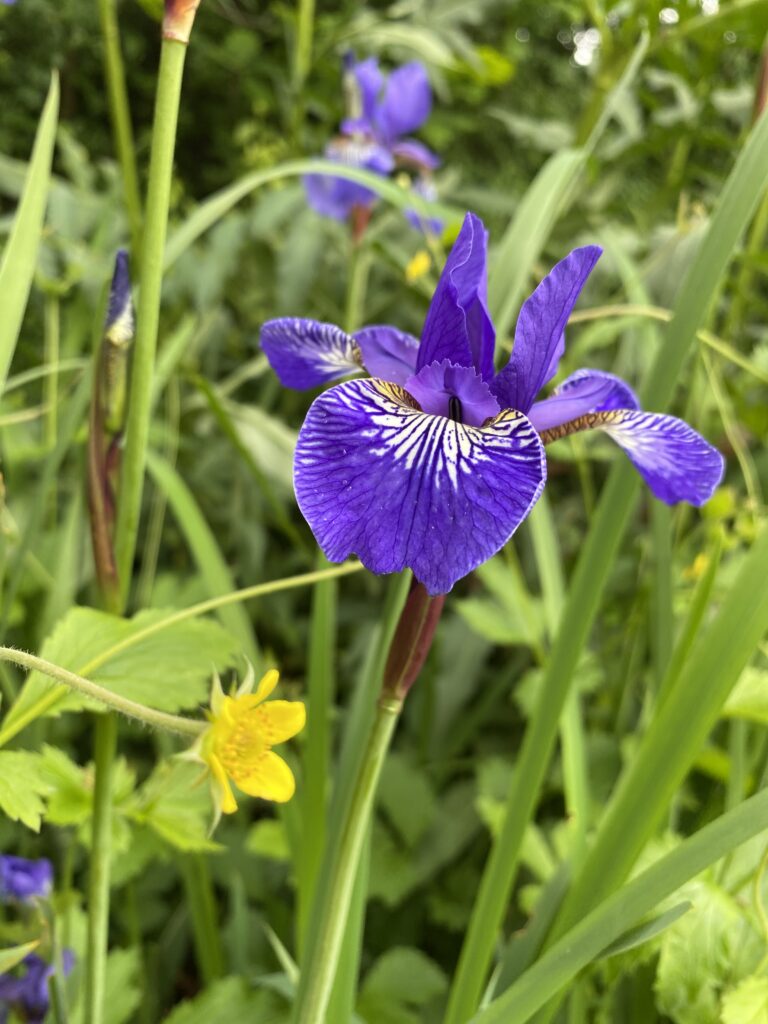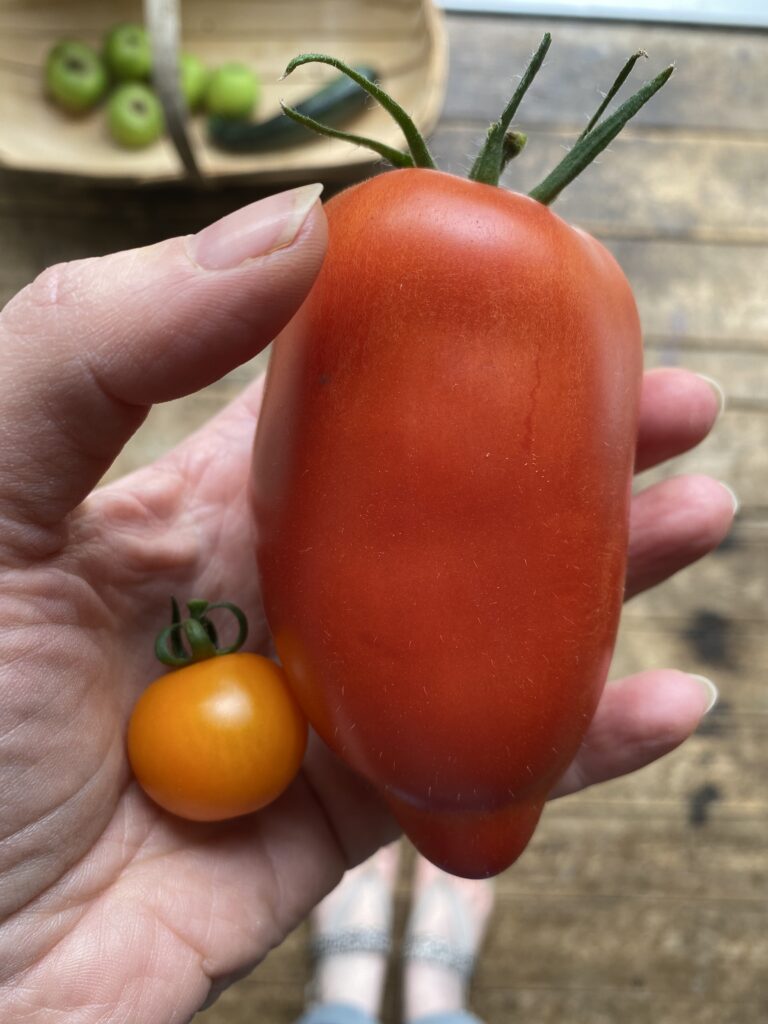The English summer of 2022 was a tricky one for every gardener. Extremely high temperatures made it almost impossible to be outside, let alone tending to our wilting, scorching gardens. This summer my garden had to fend for itself almost entirely and it did rather well. Not only did all but one plant survive, but it played an essential role in helping me get through the toughest summer of my personal life to date.
My garden was left to its own devices. Field bindweed curled itself around the bases of Eryngium and Dianthus carthusianorum in the gravel garden. Herb bennet stealthily wove itself into a stand of Iris sibirica, while hedge bindweed enjoyed an uninterrupted journey up the stems of roses and Kniphofia in the larger mixed borders.

Pots that I had planted up before the illness of a loved one came to light often went unwatered and unfed and Dahlias that had been left in unmulched borders over winter last year suffered in baked solid soil. The only part of the garden that received almost as much attention as usual was my small greenhouse, which houses several different varieties of tomatoes, peppers, chilli peppers and aubergines. I managed to find time in-between tasks of my new caring role to dive down to the greenhouse to make sure the plants were watered and fed just enough to do their thing. I was rewarded as early autumn approached with a late season glut of delicious fruit that kept on coming right up until December.

As drought ripped a giant crack through the gardens of Europe, I was inside my home caring for my loved one. The garden was way down my list of priorities but never far from my mind. Experienced gardeners know that a garden will mend itself after unusual weather. What we do not know is how gardens will cope with more frequent unusual weather. The plant that I lost was a much admired and usually very healthy Rosa x odorata ‘Mutabilis’. Mulched with gravel and very close to a hungry Sorbus pseudohupehensis ‘Pink Pagoda’, my diagnosis is that it just got too hot and too dry. By the time I realised that it was suffering, no amount of paddling pool water could revive it. Luckily, I have another R. x odorata ‘Mutabilis’ situated in dappled shade. This plant, along with all of my roses, held itself back during the high heat of summer and has subsequently looked divine throughout autumn. If you really, really love a plant, try to have at least two on the go at any one time.
It was that same paddling pool that came to the rescue of the garden throughout the second half of the summer. An inspired (but not so enthusiastically received) half-price Christmas present in 2019, it was dug out during the beautiful spring lockdown of 2020 and has continued to prove its worth. Despite having two substantial water butts and plenty of containers left out to fill with rainwater, stored water supplies tend to run low towards the end of spring, and this year was no different. When hot weather was forecast, out came the small but deep paddling pool. It was used a few times over the course of the very hot spells and then the paddling pool became a dipping pond. Two large, galvanised steel watering cans were plunged deep into the sun-warmed water and taken directly to the greenhouse. I do wonder if my tomatoes would have flourished if it wasn’t for the multitasking paddling pool.

This summer has changed the way I look at my garden and it may well change the way I interact with it in the future. Having seen how magnificent it looked without much human intervention this year, I wonder if I am going to manage it so intensively in the future. Being a gardener of paler skin, I am not a big summer gardener anyway. I enjoy working in my garden on those fantastic (what I call) non-weather days. These days can occur at any time of year in my landlocked patch of the south west of England. They are overcast, between 12-16 degrees Celsius, free of a keen breeze and altogether easy to be out in. On non-weather days I do not think about floppy hats, suncream, waterproofs or gloves. If I am lucky enough to be at home and able to garden on these days, I can achieve enough gardening to see the garden through the extreme weather days.
This is not possible in the larger gardens in which I have worked over the years. Larger gardens with a high aesthetic standard need a gardener (or twelve) on the ground as much as possible. Non gardeners have always asked me what I do in the garden in winter. All working gardeners know that this is when the real labouring is done. In my last big garden I would rarely get around to pruning every last rose on the property, even if I started in October. Mulching – the cornerstone of organic gardening – needs careful planning. You want to protect your soil over the harsh winter months but you also want as many seedheads to remain standing for food and habitats for garden critters, and yet you cannot leave it too late for fear of treading on any emerging bulbs. I am hoping for plenty of non weather days to come for there is much to do.
This summer the saviour of my garden wasn’t me. The saviour of me was my garden. I hope for easier summers to come. I hope to be able to stay on top of the weeding. As much as I tried to embrace the herb bennet and the gorgeous flowers of the field bindweed, I cannot allow them to take over. As much as I needed the garden to support me this year, in the future I hope to be on the ground to manage those delicate balances that all of the very best and most loved gardens require.






